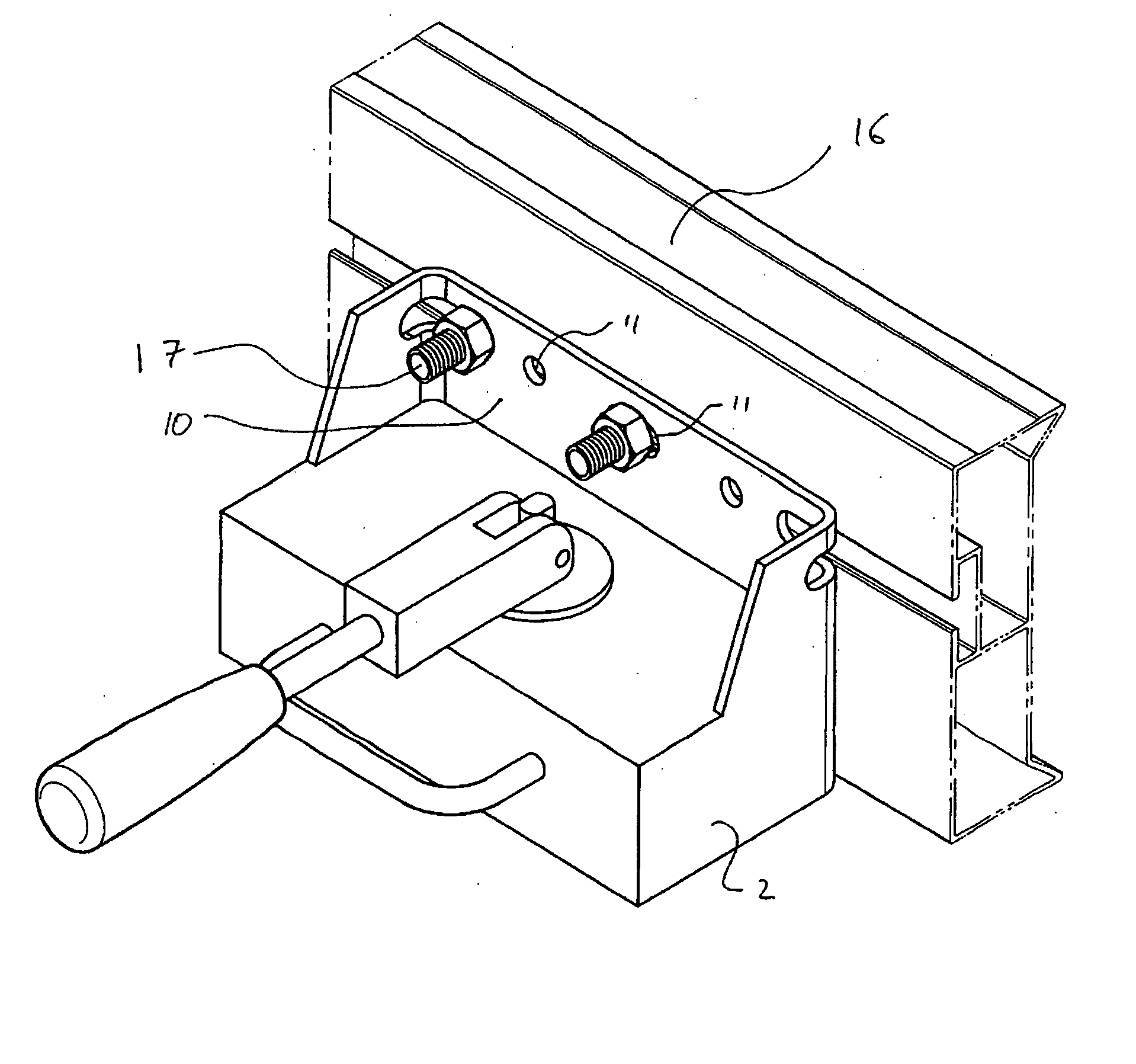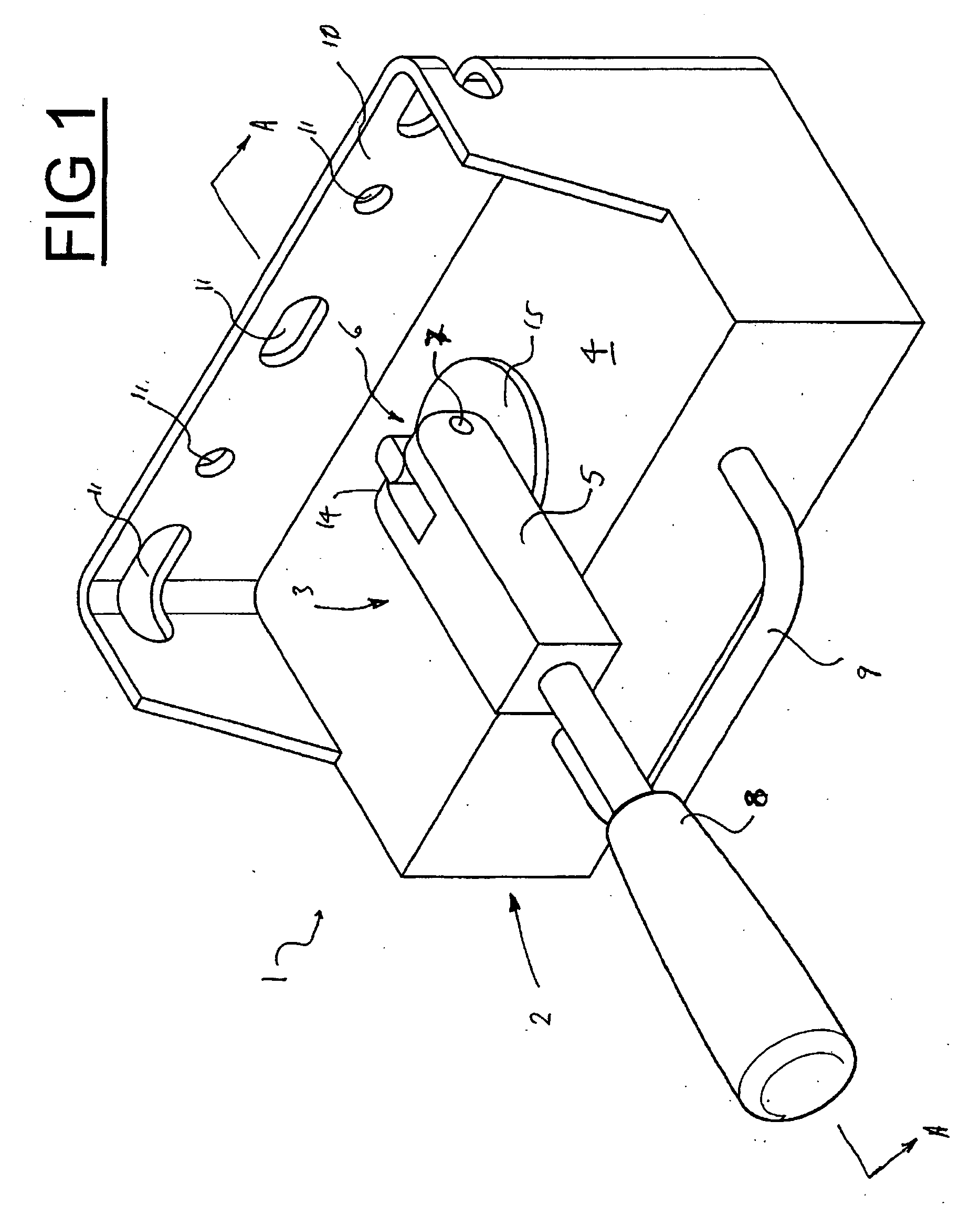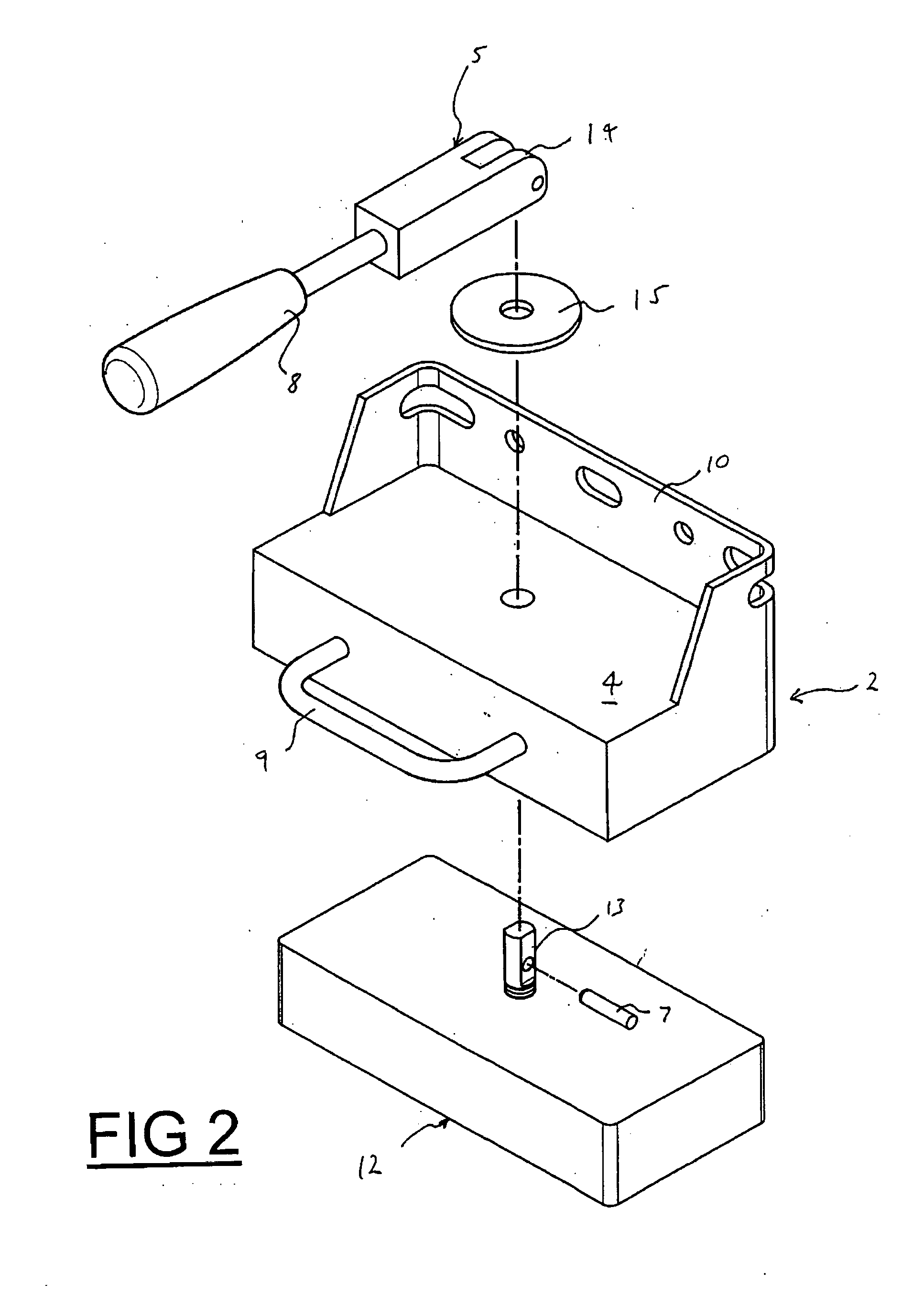Support device
a technology of support and support plate, which is applied in the direction of mould fastening means, domestic objects, shaping building parts, etc., can solve the problems of affecting the quality of the panel, so as to reduce the likelihood of damage to the formwork surface and facilitate the adjustment
- Summary
- Abstract
- Description
- Claims
- Application Information
AI Technical Summary
Benefits of technology
Problems solved by technology
Method used
Image
Examples
Embodiment Construction
[0039] Referring now to FIG. 1 there is illustrated a preferred form of a support device 1 according to the invention. The support device 1 illustrated includes a support structure 2 with a switching means 3 located adjacent an upper surface 4 of the structure 2. The switching means 3 illustrated includes a cam member 5 connected to a link member 6 via a pin 7. The switching member 3 illustrated also includes a lever 8 extending from an end of the cam member 5 for facilitating operation of the switching means 3, which operation will be discussed later on in the specification.
[0040] The support structure 2 also includes a handle 9 for facilitating manipulation of the support device 1, which handle 9 extends from a surface of the structure extending substantially transverse to the upper surface 4. Clearly the location of the handle 9 is merely preferred and it is possible that the handle 9 may be located on an alternative position of the structure 2.
[0041] The structure 2 illustrate...
PUM
 Login to View More
Login to View More Abstract
Description
Claims
Application Information
 Login to View More
Login to View More - R&D
- Intellectual Property
- Life Sciences
- Materials
- Tech Scout
- Unparalleled Data Quality
- Higher Quality Content
- 60% Fewer Hallucinations
Browse by: Latest US Patents, China's latest patents, Technical Efficacy Thesaurus, Application Domain, Technology Topic, Popular Technical Reports.
© 2025 PatSnap. All rights reserved.Legal|Privacy policy|Modern Slavery Act Transparency Statement|Sitemap|About US| Contact US: help@patsnap.com



